Le avventure grafiche punta e clicca stanno trovando una seconda giovinezza. Un tempo amatissime dagli utenti Pc (ma con ottimi prodotti anche sugli 8 bit e sui 16 bit), sono riuscite a sopravvivere all’incedere del tempo. Ancora oggi, infatti, i “punta e clicca” in 2d sono piuttosto gettonati. Ultimo esempio in ordine cronologico è Gibbous – A Cthulhu Adventure, titolo firmato dal team indipendente Stuck in Attic uscito lo scorso 7 agosto su Steam e GOG.
E dopo averci affascinato con il suo aspetto (che ci ha ricordato a tratti alcune produzioni disneyane), le sue musiche e divertito con i suoi dialoghi, abbiamo premiato il titolo. Non contenti, però, abbiamo voluto approfondire l’argomento contattando agli autori di questo piccolo gioiello.
Ci ha risposto Liviu Boar, direttore creativo della piccola software house della Transilvania, che ha realizzato il gioco. Abbiamo scambiato quattro chiacchiere con una delle figure chiave di Gibbous provando ad approfondire l’argomento ed abbiamo avuto alcune risposte interessanti.
Tra queste anche la volontà (facile da intuire) di voler portare il gioco su console e soprattutto un’apertura su una nuova avventura sempre ambientata nello strampalato mondo di Gibbous ma anche il sorprendente episodio che ha fatto nascere lo studio. Chi ha detto che gli incidenti sono soltanto negativi?
Vi lasciamo alla nostra intervista. Vi auguriamo, dunque, buona lettura.
(Ha collaborato DannyDSC)
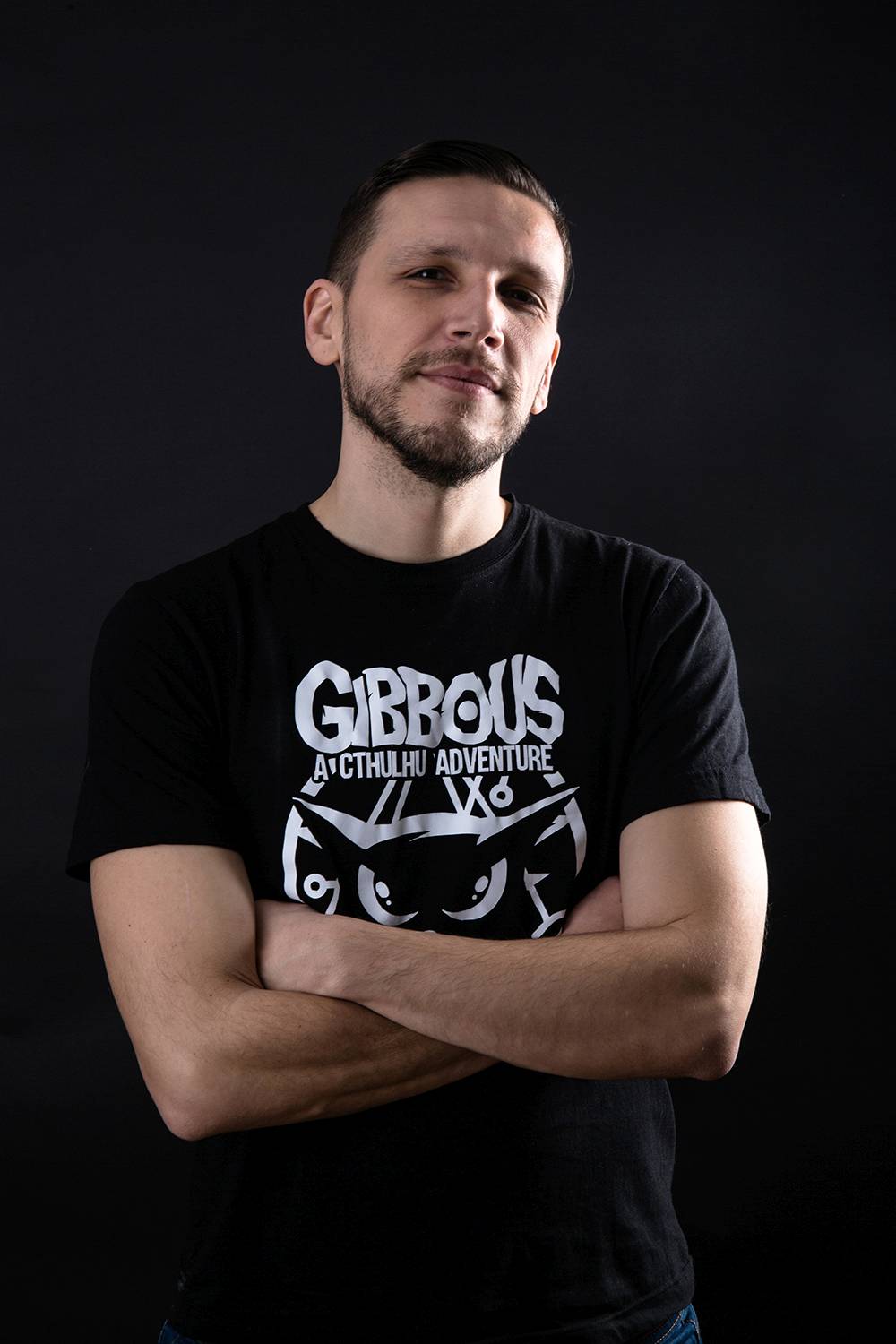
Innanzitutto grazie per il vostro tempo. Stuck in Attic, presentatevi al pubblico italiano.
Ciao! Siamo una squadra di tre persone – due artisti e un programmatore – che opera in una soffitta oscura e inquietante, da qualche parte nel cuore della Transilvania – da qui il nome del nostro studio. Ci siamo incontrati quando qualcuno si è schiantato contro le nostre auto in un parcheggio. Quando ci siamo ritrovati nella hall della compagnia assicurativa, abbiamo parlato scoprendo che tutti volevamo realizzare videogiochi. Abbiamo iniziato a lavorare su Gibbous nel 2015. Quattro anni dopo, il gioco è uscito su Steam e GOG. I sogni si avverano!
Già su Kickstarter avevate avuto un buon riscontro di pubblico, come stanno andando le vendite su Steam e GOG?
Fantastico, finora! Al momento in cui rispondo a queste domande, Gibbous è ancora in prima pagina sia su Steam che su GOG, e ci è rimasto dal lancio. Non avremmo mai immaginato che potesse accadere, e ne siamo davvero entusiasti. Sembra che la gente ami ancora i giochi di avventura! Speriamo solo che il nostro prodotto faccia bene sul lungo termine, così da poter continuare a sviluppare giochi per vivere. Questo è il nostro sogno.
Contenti per l’attenzione del pubblico?
Sì, lo siamo e siamo grati a tutti coloro che sanno che esistiamo. Il mercato dei videogiochi è follemente affollato: con il numero di proodotti che ogni giorno vengono rilasciati, è come uno stadio pieno di persone che urlano fino allo stremo, mentre tu cerchi di urlare più forte di loro.
Abbiamo avuto la fortuna di avere 30.000 persone che hanno aggiunto il gioco nella propria “wishlist” su Steam prima del lancio, e ora che è disponibile su entrambe le piattaforme, è bello vedere così tante persone scoprirlo per la prima volta. Dopo aver lavorato sul gioco quasi in anonimato per così tanto tempo, è una sensazione quasi surreale.
Cosa vi ha spinto a realizzare un’avventura grafica piuttosto tradizionale rispetto ad altri generi magari più in voga?
Inizialmente eravamo uno studio di animazione molto piccolo che ha aggiunto un programmatore ed è diventato una software house. I giochi di avventura – in particolare i classici degli anni ’90, come Day of the Tentacle e Sam & Max Hit the Road – sono fondamentalmente cartoni animati interattivi. Adoriamo i cartoni animati, amiamo l’animazione e volevamo creare un gioco ricco di narrativa, quindi un classico gioco di avventura era il modo perfetto per farlo. Questo, e il fatto che siamo innamorati del genere da molti, molti anni.
Avete mantenuto il 2D, avete avuto tentazioni di passare al 3D?
Neanche per un secondo. Amiamo disegnare e amiamo l’animazione tradizionale, fotogramma per fotogramma. È stata una delle cose più soddisfacenti di questo progetto, dal punto di vista professionale, quella di far sembrare Gibbous il più simile possibile ad un vero cartone animato. Il 3D è fantastico, ma non si adatterebbe al progetto, e impedirebbe al giocatore di sentire di camminare in un tradizionale film d’animazione.
Quali tool o engine avete utilizzato per sviluppare Gibbous?
Abbiamo usato Unity, oltre al plug-in Adventure Creator, uno strumento molto utile che ti offre un framework di base su cui costruire un’avventura di stampo classico; abbiamo personalizzato questo strumento in modo da poter aggiungere cose interessanti come ombre in tempo reale, riflessi e un sistema meteorologico. Da parte nostra, animiamo tutto in Toon Boom Harmony, gli sfondi sono stati dipinti in Photoshop e abbiamo composto la musica usando FL Studio.
Un investigatore che sembra Dick Tracy, un bibliotecario che a sua volta ogni tanto ci ricorda Guybrush Threepwood, ed una gatta parlante… avevate in mente altri personaggi per questo stravagante cast di protagonisti?
Potrebbero essere personaggi compositi che attingono da molte fonti di ispirazione – non solo quelle che hai elencato sopra, ma anche Humphrey Bogart, il detective Lewton di Discworld Noir, Max di Sam e Max, e l’elenco potrebbe continuare – ma riteniamo siano più adatti per proporsi da soli, e sono più di una semplice raccolta fusione di varie influenze. Ho visto così tante persone giocare e innamorarsi dei personaggi, tifare e ridere con loro quando le cose vanno bene e gridare allo schermo con rabbia o tristezza quando le cose si complicano. È una bella sensazione – le persone si preoccupano per loro. È tutto ciò che puoi chiedere come scrittore.
Parlateci di Kitteh, il gatto parlante. A chi vi siete ispirati per lei?
L’idea della trama mi è venuta in mente quando abbiamo portato a casa la nostra gattina nera appena adottata, e lei ha immediatamente preso il controllo della casa, mentre il gatto più anziano ha dovuto accettarla. Ero così divertito e colpito da quanto fosse forte la sua personalità, sentivo di dover raccontare una storia su un gatto molto determinato che improvvisamente può esprimere i suoi sentimenti.
Ovviamente, ci sono altre influenze, principalmente legate ad altri protagonisti di giochi d’avventura. Ma essere un gatto e odiare essere stato umanizzato, è il fulcro del suo personaggio. È costantemente di cattivo umore per un’ottima ragione e la sua forte personalità traspare dalle sue interazioni. Soprattutto quando rifiuta di collaborare. Lo sviluppo del personaggio, in questo caso ha portato ad influenzare anche il level design.
Al di là del trio di protagonisti, qual è il personaggio che secondo voi è il più carismatico?
Il mio personaggio preferito, accanto a Kitteh, è sicuramente Piscilla. È una bambina strana che porta in giro un pupazzo a forma di pesce e ama davvero, davvero, i suoi pesciolini. Il suo doppiatore, Anairis Quinones, ha fatto un lavoro così straordinario nel darle voce che mi viene la pelle d’oca ogni volta che parla. È così bella. E inquietante.
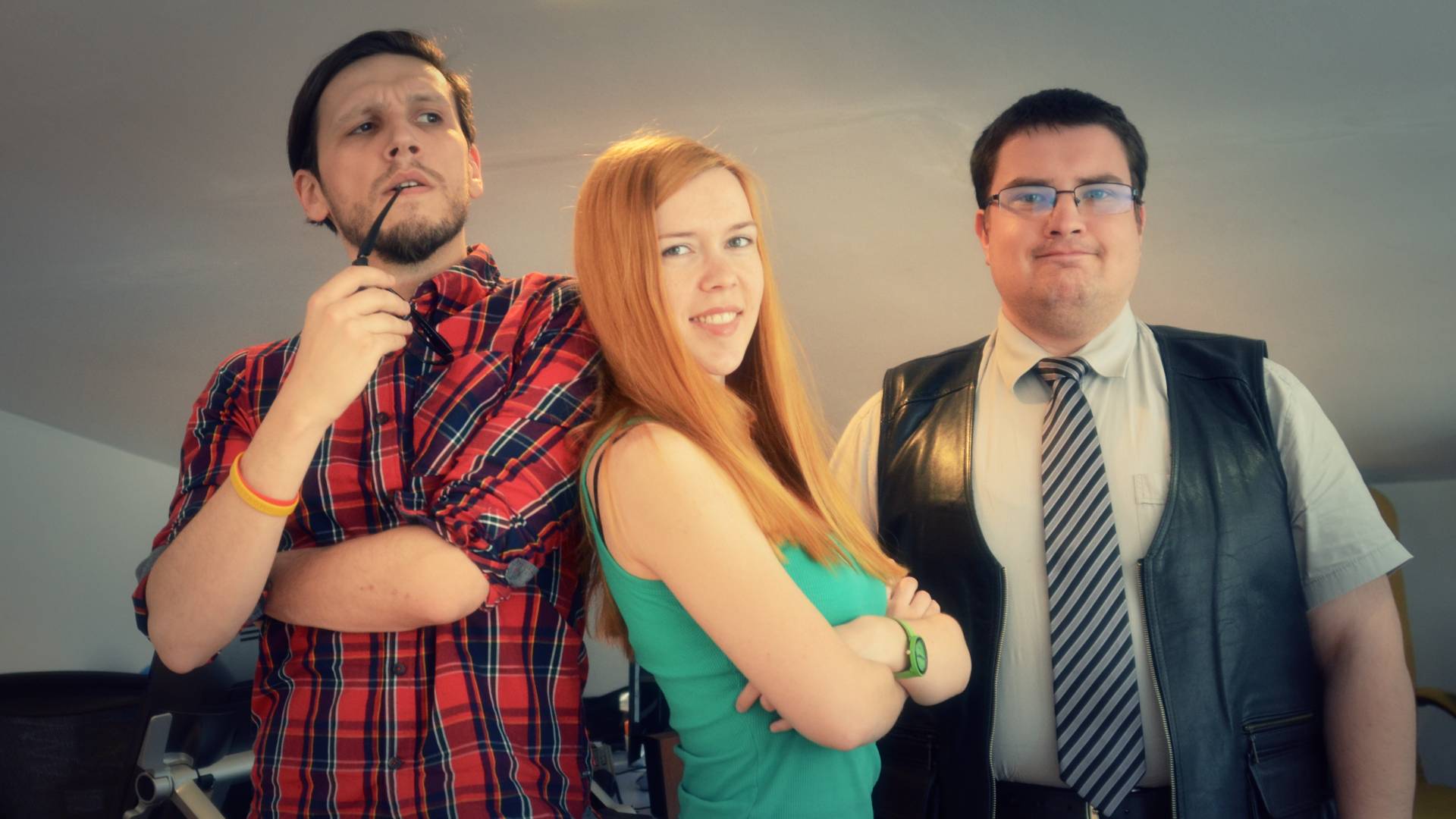
Qual è, invece, l’enigma che sentite vi è sembrato più azzeccato?
Per quanto riguarda la storia, l’enigma dietro il Necronomion: che cos’è? Perché sta trasformando tutto ciò che lo circonda? Dal punto di vista del gameplay, c’è un certo enigma verso la metà del gioco che coinvolge alcuni libri e un pentagramma che mi è davvero piaciuto progettare. È uno dei più difficili, ma davvero soddisfacente una volta capito. Le persone che hanno giocato Gibbous, sicuramente sanno di quale sto parlando.
Sono evidenti i riferimenti a The Secret of Monkey Island, siete comunque riusciti a mantenere la vostra identità. Quanto è stato difficile?
Non è stato affatto difficile. In qualche modo, costruire un mondo formato da così tante influenze diverse (LucasArts e Lovecraft di solito non sono parole pronunciate nella stessa frase) ha portato a un’esperienza molto coesiva, e fluida. Ciò ha reso molto facile per la mia mente rimanere all’interno di quel mondo e pensare a personaggi e creare trame.
Oggi, i riferimenti ai vecchi giochi di avventura sono diventate una tradizione per questo genere. So che alcune persone non li apprezzano molto, ma per me sono fantastici per il seguente motivo: la maggior parte degli altri generi non lo fa. Penso che ciò dimostri che i giochi di avventura sono speciali e hanno community molto affiatate in cui sviluppatori e giocatori si prendono cura l’uno dell’altro e dell’eredità del genere. È molto bello, secondo me.
Bravi anche ad inserire qualche cosa della vostra Transilvania.
È stato quasi naturale! Di solito andresti nel New England se ti avvicini a Lovecraft, ma non ci siamo mai stati. Siamo cresciuti in Romania, questo è ciò che ci ha plasmato, e quindi aveva senso aggiungere un sacco di sapore locale al gioco. E non sono solo le parti che accadono in Transilvania, ma tutto il resto. Se cammini per la parte vecchia della nostra città, sarà un po ‘come passeggiare per le località di Gibbous. È stata una parte molto divertente per me come artista ambientale.
Avete compiuto un’impresa difficile: rendere comica una storia ispirata ad H.P. Lovecraft. Come è nata questa idea?
È nata dal voler creare un gioco di avventura divertente, colorato e lovecraftiano allo stesso tempo. Puo’ essere fatto senza ricorrere a parodie superficiali e qualche colpo basso? Beh, se sei un grande fan di Lovecraft come me, sì, ed è l’unico modo per farlo. La mia strategia quando scrivevo Gibbous era di mantenere gli Antichi come una minaccia molto seria e di relegare l’umorismo agli umani. E agli uomini pesce. E al gatto parlante. Ha funzionato!
Stilisticamente il gioco ci è piaciuto molto. A tratti sembrava davvero di assistere a produzioni animate dal mitologico Don Bluth. A chi va il merito?
Io e Cami abbiamo lavorato insieme alle immagini per il gioco, dagli sfondi artistici alle animazioni, perchè siamo fan accaniti dell’animazione stessa. Le influenze spaziano dal lavoro di Bill Tiller a Monkey Island ai film di Don Bluth e Disney, i cartoni animati della Warner Bros degli anni ’40, l’incredibile dettaglio grafico degli sfondi dei film di Hayao Miyazaki e molti altri.
Anche il doppiaggio e la musica sono notevoli.
Grazie! Siamo stati molto fortunati a lavorare con persone di grande talento, da Don Thacker (che dà voce a Don, il detective, con toni noir morbidi davvero azzeccati) a Lindsay Peck, che ha centrato alla perfezione la strafottenza della voce di Kitteh, a Doug Cockle – meglio conosciuta come la voce di The Witcher, che … Beh, non voglio rovinare la sorpresa. Diciamo solo che il suo personaggio non è un brav’uomo in Gibbous. Insieme al resto del cast, danno vita a Gibbous in maniera entusiasmante.
Qual è secondo voi il punto forte del gioco?
Penso che ciò che attira l’attenzione di tutti sin dall’inizio sia lo stile artistico. Non abbiamo fatto compromessi qui: non solo tutto è animato fotogramma per fotogramma, cosa che richiede fino a 72 tavole per un solo secondo d’animazione, ma tutta la grafica di fondo è dipinta a mano in modo molto dettagliato. Questa è una delle cose che ha portato via molto del tempo a nostra disposizione per lo sviluppo. Ci sono decine di ambienti da esplorare e la realizzazione di un solo ambiente può richiedere dalle 8 alle 80 ore per essere terminato. È stato un lavoro duro e meticoloso, ma alla fine ha pagato. Adoro dare al giocatore molti dettagli da prendere in considerazione, e aiuta molto nella costruzione del mondo. Scegliere l’alta definizione mi ha anche dato la possibilità di nascondere molti easter eggs – buona fortuna a trovarli tutti!
Ed il suo punto meno forte?
Probabilmente direi che gestire molti file vocali diversi da molti attori diversi sparsi in continenti differenti p stata una vera sfida e sono sicuro che avremmo potuto fare di meglio. È qualcosa che potresti notare qua e là, ma nulla di troppo fastidioso. A noi fa rabbrividire sicuramente, ma almeno sappiamo come gestire questo processo per il prossimo gioco. Gibbous è stata un’esperienza di apprendimento straordinaria.
Ci sono parti di storia, avventura, ambientazioni che sono rimaste nel vostro cassetto?
Assolutamente! Ci piacerebbe creare un altro gioco nello stesso universo e ci sono delle trame in Gibbous che potrebbero legarsi a questo altro titolo. Non vedo l’ora di avere il tempo di sedermi e mettere tutto insieme, quando sarà il momento. Per ora, siamo troppo impegnati a supportare il gioco post-lancio per preoccuparcene.
Gibbous arriverà su console?
Questo è il piano, in futuro. Tuttavia, il nostro unico programmatore, Nicu (Campian, ndr), è molto impegnato con il supporto post-lancio, fixando i bug e lavorando sulle correzioni. Probabilmente ci vorrà un po’, ma siamo entusiasti di pensare che Gibbous sia in grado di raggiungere i giocatori console.
Cosa bolle nella vostra pentola? Un altro gioco o un sequel di Gibbous?
Non vogliamo parlare troppo, ma farebbe sicuramente piacere creare un altro gioco ambientato nello stesso universo di Gibbous. Speriamo che accada presto!
Ancora grazie per il vostro tempo.
All the best, grazie mille!
STUCK IN ATTIC INTERVIEW, ENGLISH VERSION
After playing at Gibbous – A Cthulhu Adventure, a stunning adventure click and point on Pc, We wanted know other dettails and go in depth on this game. We sent our questions at the indie romanian software house Stuck in Attic. Liviu Boar, Creative Director of the game, had response at Our questions about the game. We loved this adventure at first sight.
We asked some dettails about the development, the tools, the origins and the future of the game. Enjoy Our interview (Q&A).
(Thanks to DannyDSC for the translate)
First of all, thanks for your time. Stuck in Attic, please introduce yourself to the italian public.
Hey! We’re a team of three people – two artists and a programmer – operating out of a dark and creepy attic, somewhere in the heart of Transylvania – hence our studio name. We met when someone smashed into our cars in a parking lot, we found out we all want to make video games in the insurance company’s lobby, and we started working on Gibbous back in 2015. Four years later, the game is out on Steam and GOG. Dreams do come true!
The Kickstarter campaign was received very well, but how’s it selling on Steam and GOG?
Great, so far! At the time I am answering these questions, Gibbous is still on the front page of both Steam and GOG, and has been since launch. This is something we didn’t even imagine could happen, and we’re so, so excited about it. It seems people still do love adventure games! We just hope the game does well enough in the long run that we can keep making games for a living. That’s our dream.
Are you happy for the audience’s attention?
Yes, we are, and we’re grateful for everyone who takes note of us existing. The video game market is insanely crowded – with the numbers of games releasing each day, it’s like a stadium full of people shouting at the top of their lungs, and you’re trying to shout even louder than them. We were fortunate enough to have 30,000 people wishlist our game on Steam before launching, and now that it’s out on both platforms, it’s great to see so many people finding out about it for the first time. After working on the game in almost anonymity for so long, it’s almost a surreal feeling.
What led you to develop a traditional graphical adventure rather than other games type, perhaps most popular?
We were initially a very small animation studio that added a programmer and became a game development studio. Adventure games – especially the classics of the 90s, like Day of the Tentacle and Sam & Max Hit the Road – are basically interactive cartoons. We love cartoons, we love animation, and we wanted to make a narrative-heavy game, so a classic adventure game was the perfect way to do it. That, and they are a genre that we’ve been in love with for many, many years
For this game, you choose a 2D visual style. During the development, you’ve had temptation to switch to 3D?
Not even for a second. We love drawing, and we love traditional, frame-by-frame animation. It was one of the most satisfying things about this project, professionally, trying to make Gibbous look as much like a real cartoon as possible. 3D is great, but it would not have fit the project, or the intention of it feeling like you’re walking around inside a traditionally animated movie.
Which tools or engines did you use to develop Gibbous?
We used Unity, plus the Adventure Creator plugin – a very handy tool that give you a basic framework to build a classic adventure on; we customized this tool so we could add cool stuff like real time shadows, reflections, and a weather system. On our end, we animate everything in Toon Boom Harmony, the backgrounds were painted in Photoshop, and we composed the music in FL Studio.
An investigator who looks like Dick Tracy, a librarian that remind us Guybrush Threepwood, and a talking cat…did you have in mind other characters for this whimsical cast of protagonists?
They might be composite characters that draw from many sources of inspiration – not just the ones you listed above, but also Humphrey Bogart, Detective Lewton from Discworld Noir, Max of Sam & Max fame, the list goes on – but we feel they’ve come into their own, and they are more than just a collection of influences. I’ve already watched so many people play the game and fall in love with the characters, cheer along with them when things go well and shout at the screen in anger or sadness when things don’t. It’s a great feeling – people care about them. It’s all you can ask for as a writer.
Let’s talk about Kitteh, our talking cat. What inspired your for this character?
The whole idea of the plot came to me when we brought our newly adopted black kitten home, and she instantly took over the house, while the older cat just had to accept it. I was so amused and impressed by how strong her personality was, I just felt I had to tell a story about a very determined cat that can suddenly voice her feelings. Of course, she’s also a product of many other influences, too – mainly snarky protagonists in adventure games. But being a cat, and hating having been humanized, is what is central to her character. She’s constantly in a bad mood for a very good reason, and her strong personality shines through in interactions with her. Especially when she refuses to collaborate. That’s a bit of character development influencing game design there.
Besides the trio of protagonists, which character do you think is the most charismatic ?
My favorite character, next to Kitteh, is definitely Piscilla. She’s a weird little girl that carries around a fish doll and really, REALLY loves her fishies. Her voice actor, Anairis Quinones, did such an amazing job at voicing her that I get goosebumps every time she talks. She’s so cool. And creepy.
And what’s the enigma you seemed more appropriate?
Story-wise, the enigma behind the Necronomion – what is it? Why is it transforming everything around it? From a gameplay perspective, there is a certain puzzle toward the middle of the game that involves certain books and a pentagram that I really enjoyed designing. It’s one of the toughest ones, but also very satsifying once you figure it out. People who’ve played the game definitely know which one I’m talking about.
References to The Secret of Monkey Island are obvious, but you have managed to maintain your identity. How hard was that?
It wasn’t difficult at all. Somehow, building the world out of so many radically different influences (LucasArts and Lovecraft aren’t usually words pronounced in the same sentence) resulted in a very cohesive experience, with a very good flow. That made it very easy for my mind to stay within that world and think up characters and plot threads. The references to older adventure games are a tradition at this point in this genre. I know some people don’t appreciate them that much, but to me they are great for the following reason: most other genres don’t do this. I think this proves that adventure games are special, and have very tight-knit communities where devs and players care for each other, and for the genre’s legacy. That’s very cool, in my opinion.
Good also to insert something of your Transilvania.
That came naturally! Usually you’d go to New England if you approach Lovecraft, but we’ve never been there. We grew up in Romania, that’s what shaped us, and so it made sense to add a lot of local flavor to the game. And it’s not just the parts that happen in Transylvania, but everything else. If you walk around the old part of our town, it will be a bit like walking around Gibbous’ locations. That was a very fun part for me as an environment artist.
You have done a difficult task: make a story inspired by H.P. Lovecraft. How did this idea come about?
It came from wanting to make a funny, colorful, cartoony adventure game AND a Lovecraftian game at the same time. Could this be done without resorting to shallow parody and cheap shots? Well, if you’re a big Lovecraft fan like I am, yes, and it’s the only way to do it. My strategy when writing Gibbous was to keep the Old Ones as a very serious threat, and relegate the humor to the humans. And the fish people. And the talking cat. It worked!
We love the visual style of the game. At times it really seemed to watch productions animated by the mythological Don Bluth. Who gets the credit for this work?
Myself and Cami both created the visuals for the game, from background art to animation, and we’re big animation fans. Influences range from Bill Tiller’s work on Monkey Island to Don Bluth and Disney movies, Warner Bros cartoons of the 40s, the incredibly detailed background art in Hayao Miyazaki’s films, and many more.
Also the voice over and the soundtrack are impressive.
Thank you! We were very fortunate to work with very talented people, from Don Thacker (who voices Don, the detective, with spot-on noir velvety tones) to Lindsay Peck, who nailed the perfect amount of sass in Kitteh’s voice, to Doug Cockle – better known as the voice of The Witcher, who… Well, I won’t spoil that. Let’s just say his character’s not a very good guy in Gibbous. Along with the rest of the cast, they really bring Gibbous to life in a big way.
What do you think is the highlight of the game?
I think what catches everyone’s eye from the beginning is the art style. We’ve made no compromises here – not only is everything animated frame by frame, which sometimes requires 72 drawings for one second of animation, but all the background art is hand-painted in great detail. This is one of the things that ate up a huge part of our development time.
There are tens of environments to explore, and painting one took anywhere betwen 8 and 80 hours to complete. It was a lot of hard, meticulous work, but it payed off in the end. I love giving the player a lot of details to take in, and it helps so much with the world building. Going HD also afforded me the possibility to hide a lot of easter eggs in the art – good luck finding them all!
And its weakest point?
I would probably say that handling a lot of different voice files from many different actors across several continents and making them all sound similar was a challenge I’m sure we could have done better at. It’s something that you might notice here and there, but it’s nothing too annoying. It makes us cringe, for sure – but at least we know how to handle this for the next game. Gibbous has been an amazing learning experience.
Are there parts of history, adventure, settings that have remained in your drawer?
Absolutely! We’d love to make another game in the same universe, and there are plot threads in Gibbous that might tie into that. I can’t wait to have the time to sit down and put everything together, at some point. Right now, we’re too busy supporting the game post-launch to even worry about that.
Will Gibbous arrive on consoles?
That is the plan, in the future. However, our only programmer, Nicu (Campian, NDR), is very busy with post-launch support, patching in fixes and squashing bugs. It will probably be a while, but we’re excited to have Gibbous reach non-Pc players, too.
What’s in the pot? Another game or a sequel of Gibbous?
We don’t want to say too much, but we would definitely love to make another game set in the same universe as Gibbous. Here’s to hoping it will happen soon!
Thank you for your time!
All the best, grazie mille!
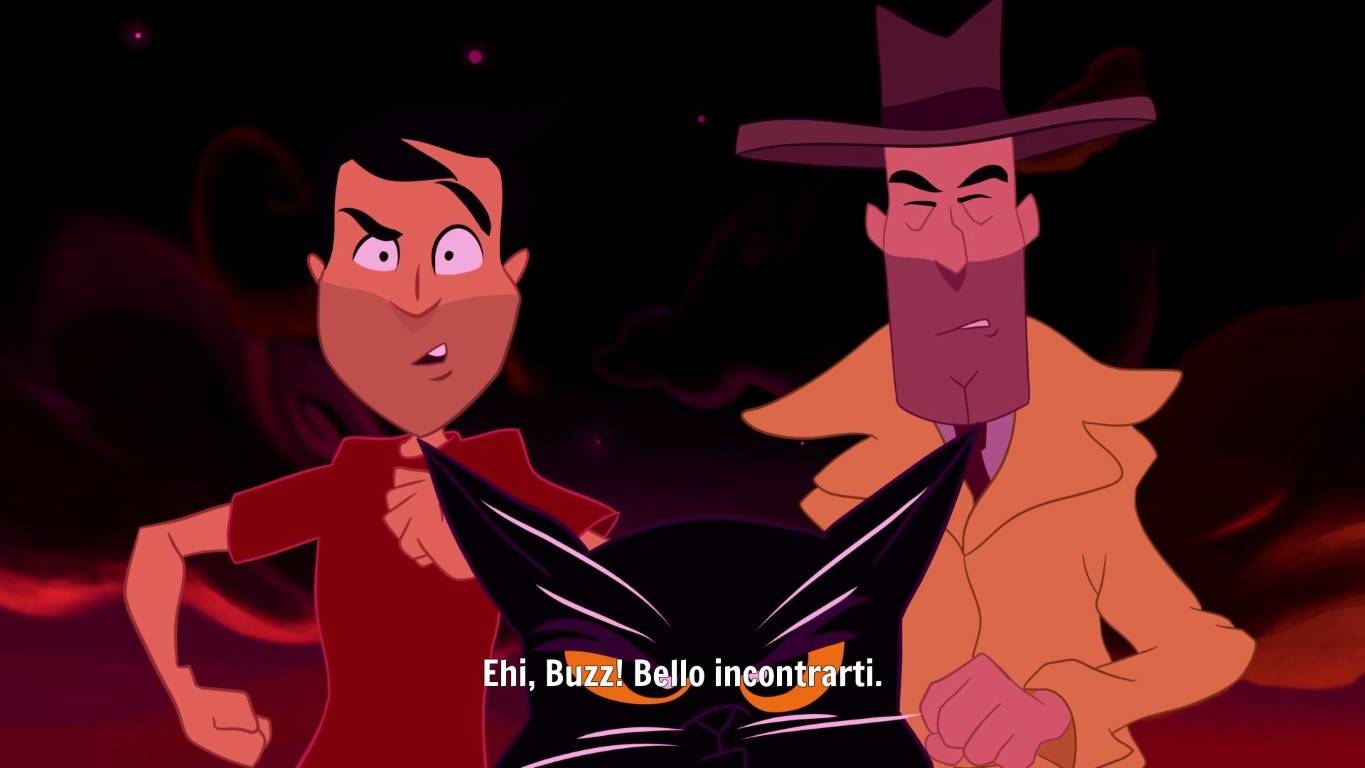
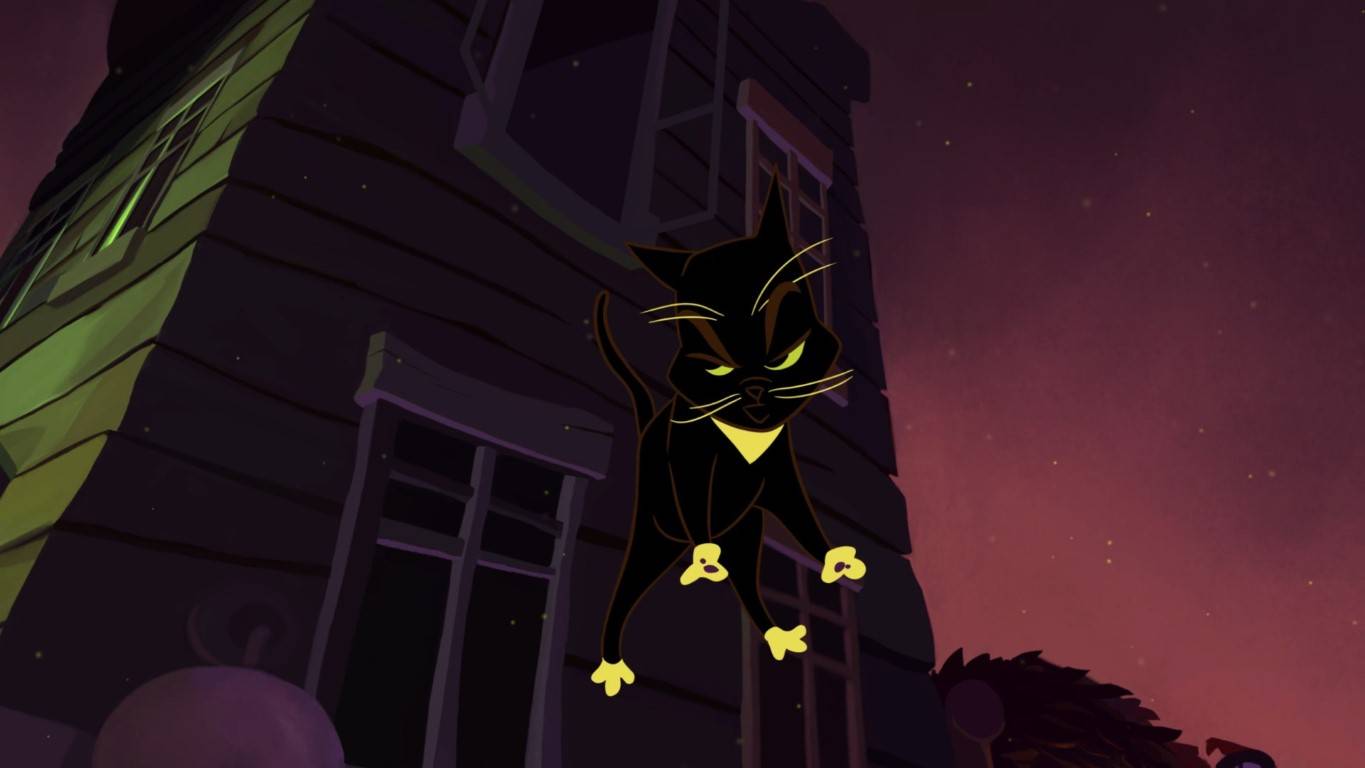
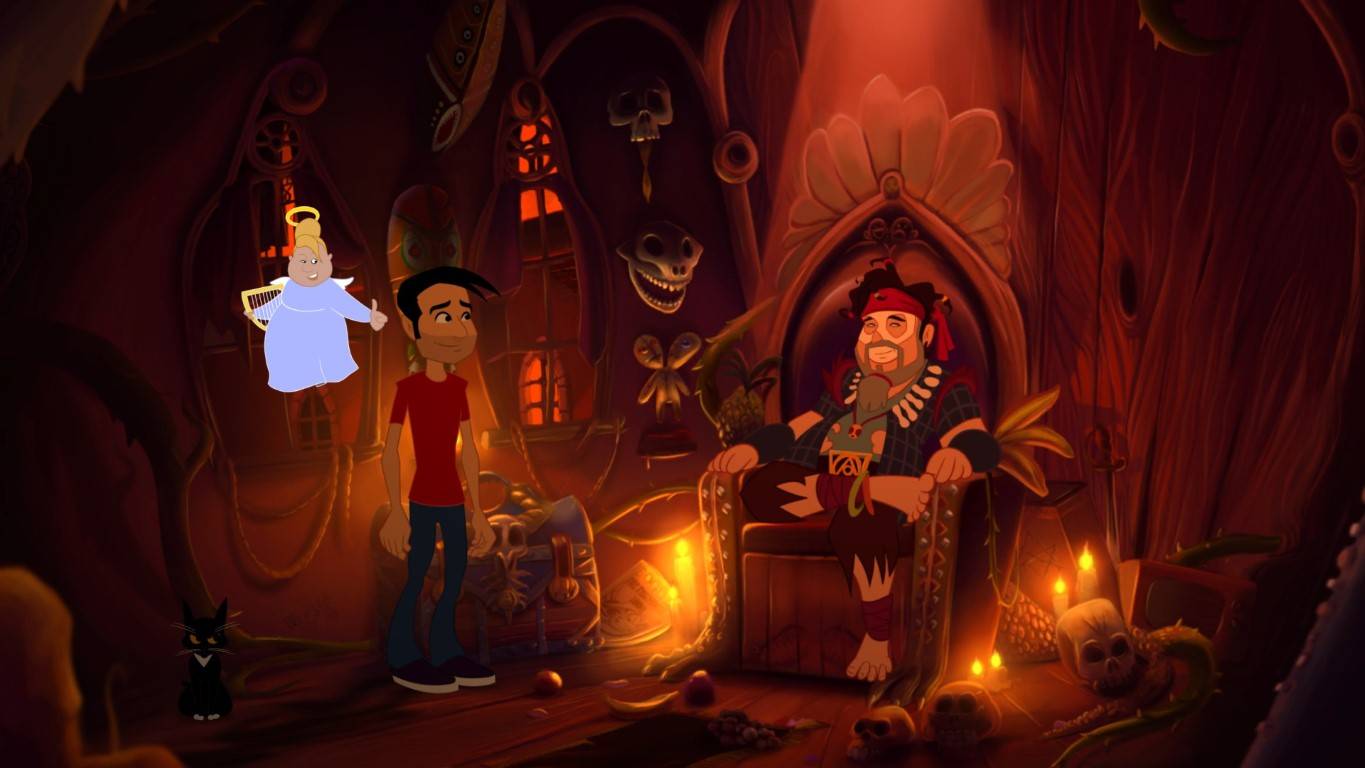
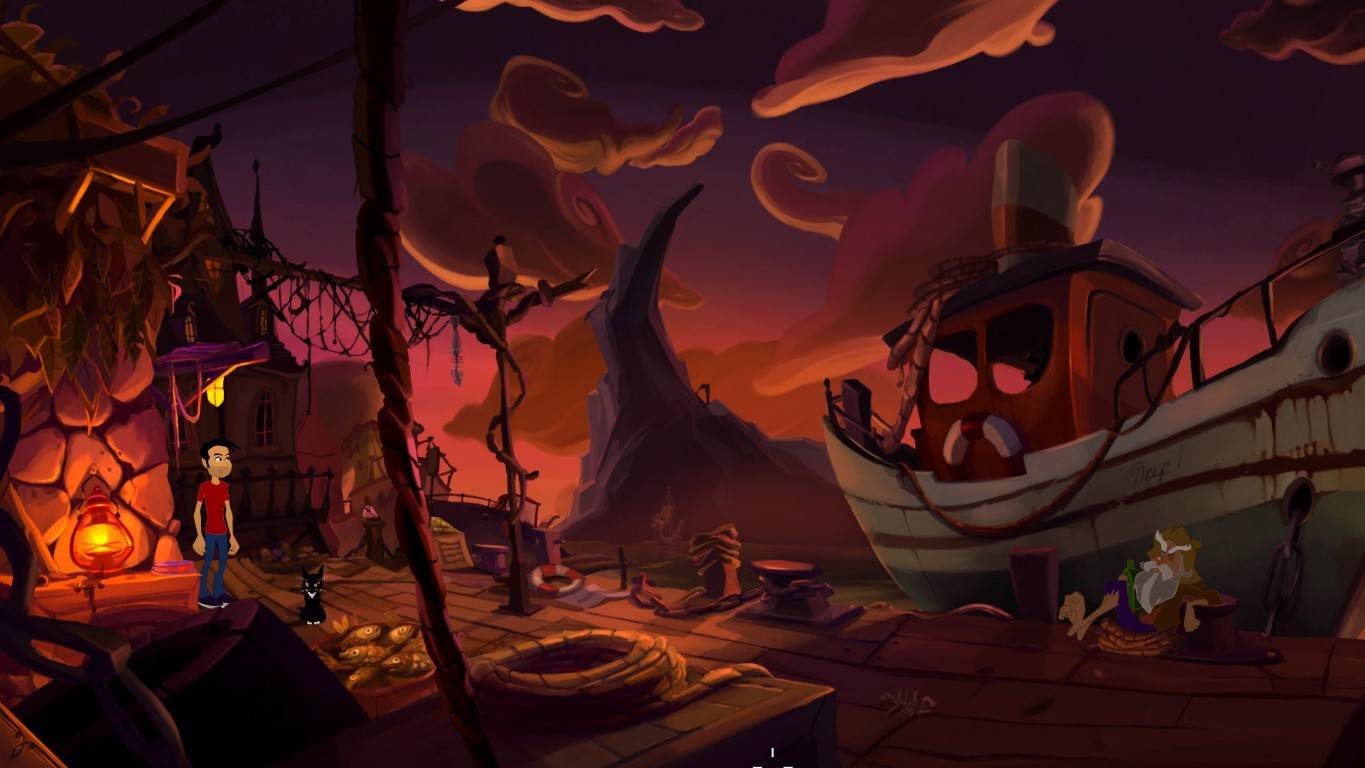
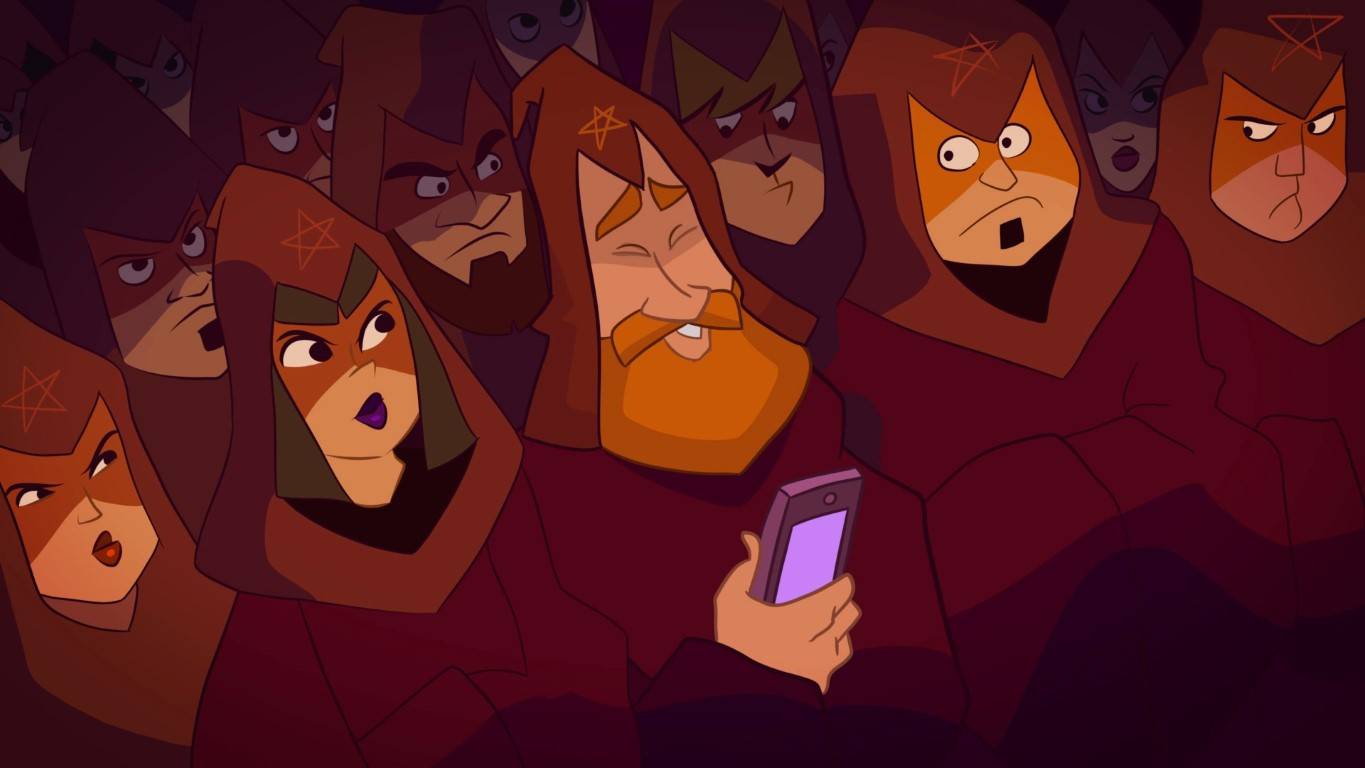
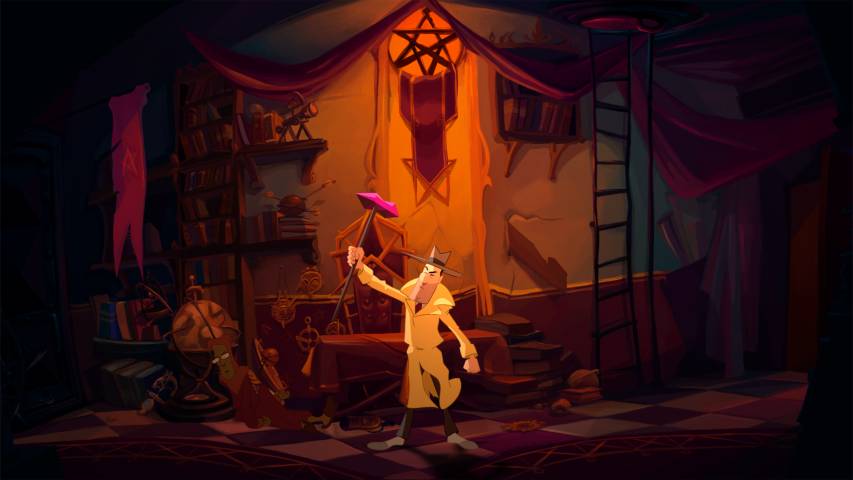
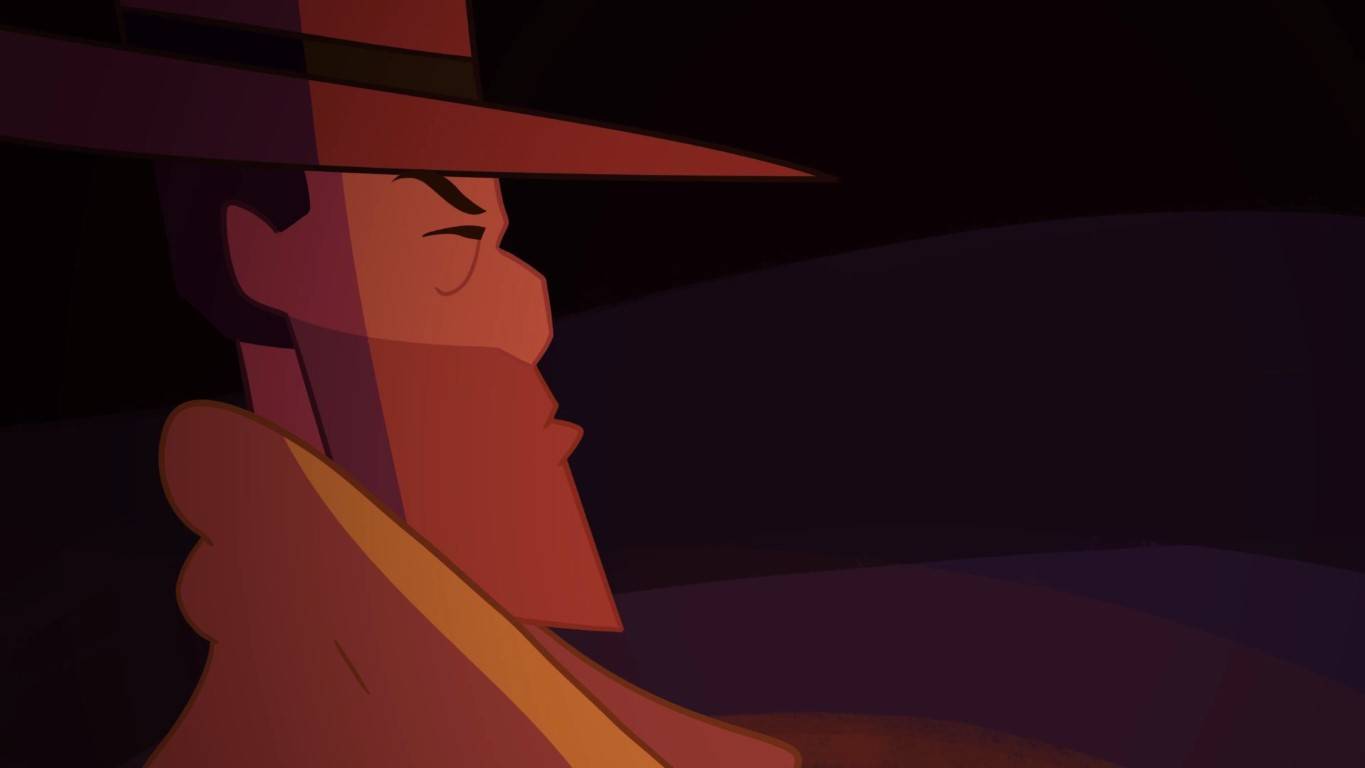
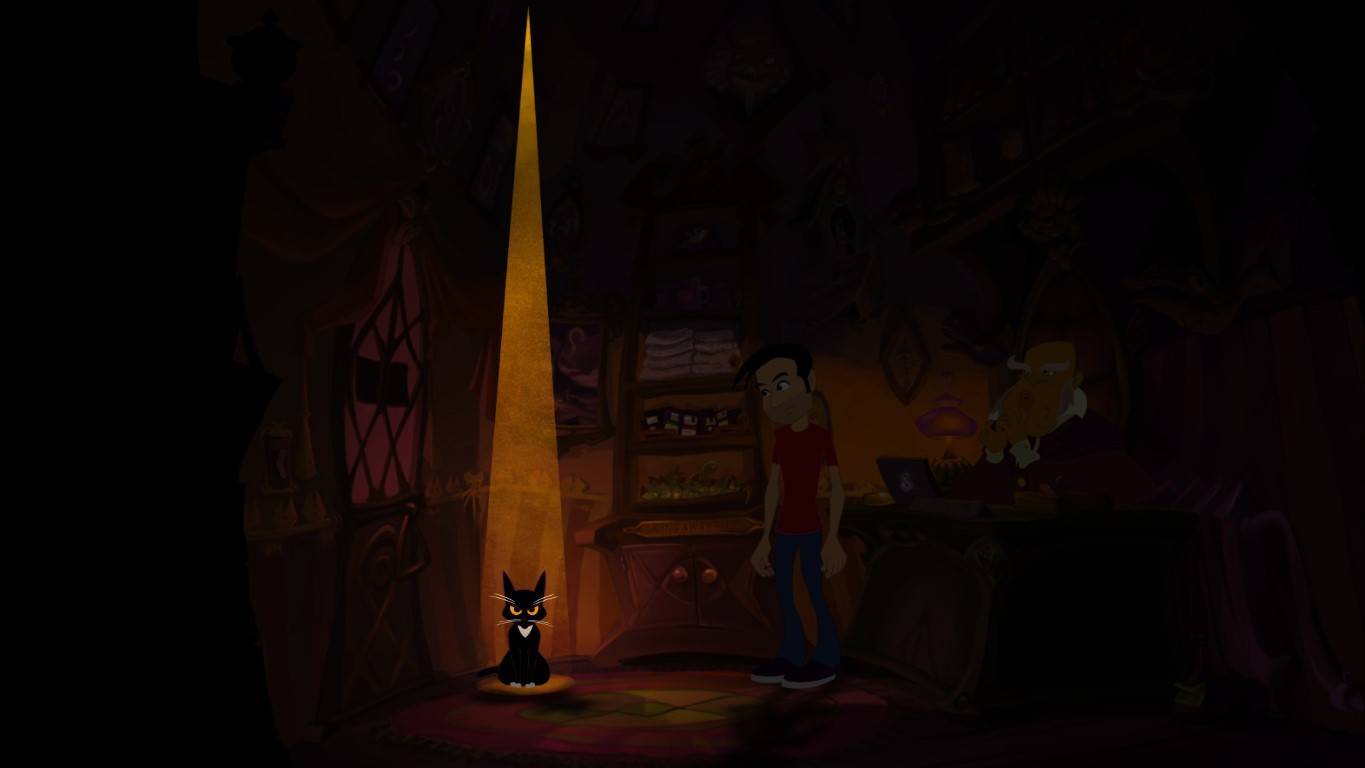
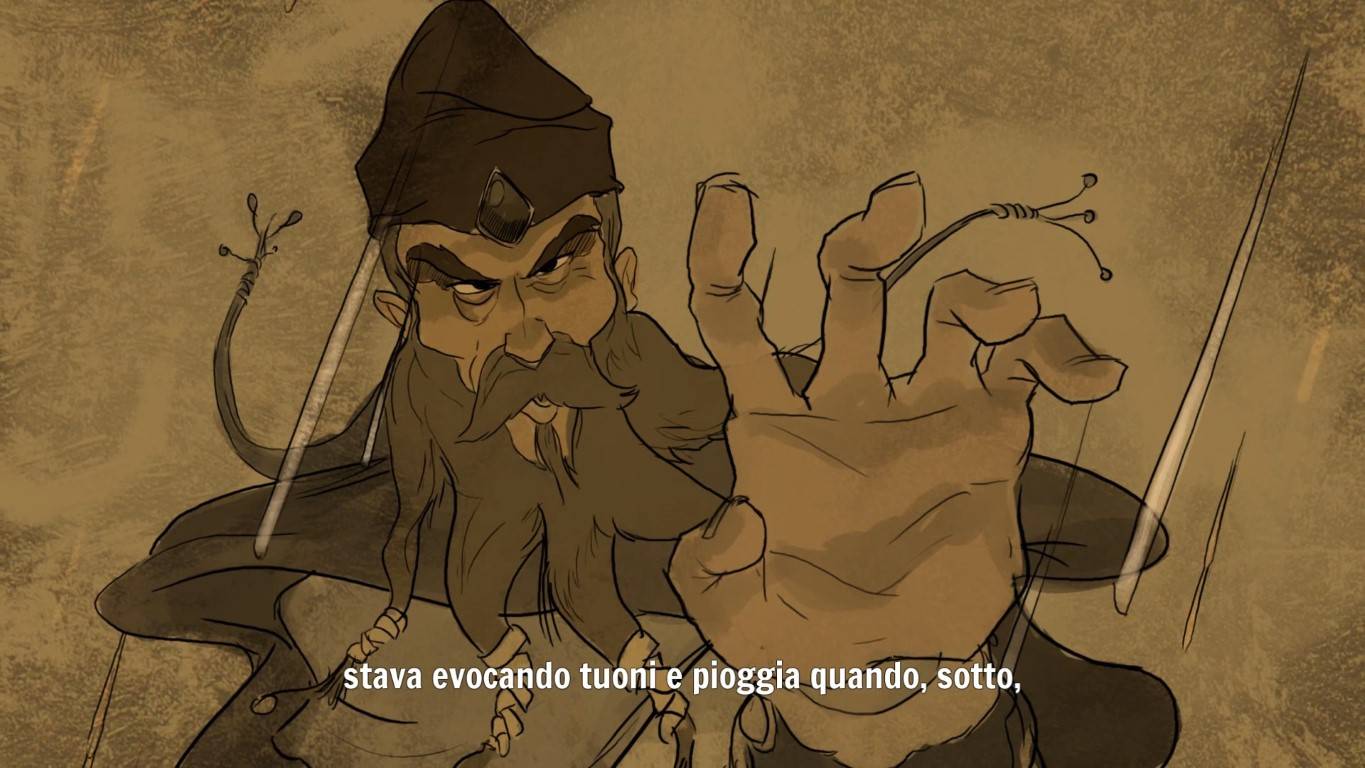
1 commento su “Intervista a Stuck in Attic su Gibbous (Ita-Eng)”